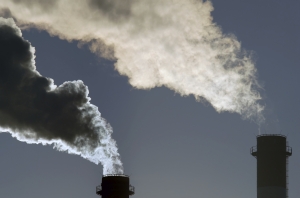Amid a recent surge in carbon neutrality pledges, many businesses are looking to offset the emissions they cannot cut, with voluntary demand for carbon offsets doubling over the past two years. By 2030, voluntary demand from industry is forecast to grow beyond 2 million Australian Carbon Credit Units (ACCUs) per year, as large-emitting companies look for ways to meet their newly established emissions goals.
While Australian companies are able to offset their emissions using low-cost international offsets – such as financing projects in developing countries that deliver verified emissions reductions – many businesses are beginning to explore domestic investment opportunities, such as direct offtake agreements with Australian carbon farming project developers, or by contracting via the spot market.
For these companies, it can be challenging to track the ACCU spot price, with the secondary market for ACCUs conducted via private over the counter (OTC) transactions, while the weighted average price of ACCUs via the Emission Reduction Fund (ERF) is of little help as a price signal for spot market contracting.
So what is the current Australian carbon spot price?
The price of ACCUs climbed back above $16/t on the spot market in early September, reaching a 6-month high of $16.50/t at the start of November – where it has remained on low traded volumes for the past three weeks.
Prices are up 4.4% from a 12-month low of $15.80 recorded over May-June of this year, recovering to pre-COVID levels of March-April of this year. The spot price is again trading at a premium to the ERF average price of $15.74/t, following a decrease in the ERF average price (from $16.14/t) at the 11th ERF auction held in September.
Figure 1: RepuTex ACCU spot price

Despite an increase in contracting at the 11th ERF auction, with abatement volumes growing from 1.7m in March to 7m in September, the scheme continues to contract at low volumes, with the last six auctions failing to contract above 10m ACCUs, well below the 19m average contracting rate (all auctions), and a high of 50m at Auction 3.
As we have noted in earlier updates, the slowdown in contracted volumes is attributed to the current low-price environment, and the voluntary nature of the scheme. While early auction rounds contracted many existing projects (transitioning from the former Carbon Farming Initiative), modest price increases in later rounds have failed to incentivise the participation of projects slightly higher up Australia’s abatement cost curve, such as reforestation, soil carbon and plantation forestry, as well as industrial projects such as source separated organics, commercial buildings, and wastewater.
Figure 2: ERF contracted abatement versus Average price per tonne.

Goodbye Kyoto “carryover” credits…?
The Prime Minister has signalled that Australia may drop its plans to use Kyoto “carryover” credits to meet its emissions target under the Paris Agreement, suggesting that the government is increasingly confident that its updated emissions projections, to be released in December, will further reduce Australia’s greenhouse gas (GHG) abatement task, removing the need to rely on carryover credits to meet its 2030 target.
The government’s most recent emissions projections, released in December 2019, indicate national emissions will reach 511 Mt CO2-e in 2030, 16% below 2005 levels. Australia’s cumulative abatement task to meet its 26-28% emissions reduction target (on 2005 levels) by 2030 is 392 to 459 Mt CO2-e. When carryover credits are included (411 Mt CO2-e), the task is reduced to -19 to 48 Mt CO2-e.
Australia’s emissions have historically been mis-forecast, with annual updates leading to large downgrades in projected emissions. While this is publicly interpreted as ‘Australia making inroads into its carbon reduction task’, in practice, the downgrades often reflect changes to previously incomplete policy assumptions, particularly with respect to the take-up of rooftop PV and the commissioning of large-scale renewable energy projects, or downgrades to bullish economic assumptions.
Along these lines, we anticipate further downgrades to the government’s upcoming emissions projections, primarily due to the impact of COVID-19 on transport emissions and continued renewable energy uptake (potentially including the recently legislated NSW government policy). However, announced federal policy, such as the Technology Investment Roadmap, is unlikely to materially impact near-term emissions, with technologies such as low-carbon iron and steel not proposed to be commercially viable until 2030 or 2040.
As a result, the government is likely to bank the COVID-19 benefit of lower GHG emissions to support a shift away from the use of carryover credits, rather than any policy driven inroads into its carbon reduction task.
While the expected shift on the use of carryover credits is positive, the design of a plan to transition industry towards net-zero emissions is a far bigger elephant in the room. Fundamentally, the earlier a target is set, the shallower the trajectory to decarbonise the industrial sector. Inversely, delay in setting a net-zero target is modelled to have notable impacts for the timing and volume of industry abatement – and therefore the cost of delivering emissions reductions.
Kind Regards,
The RepuTex Team
Australian Electricity Markets














